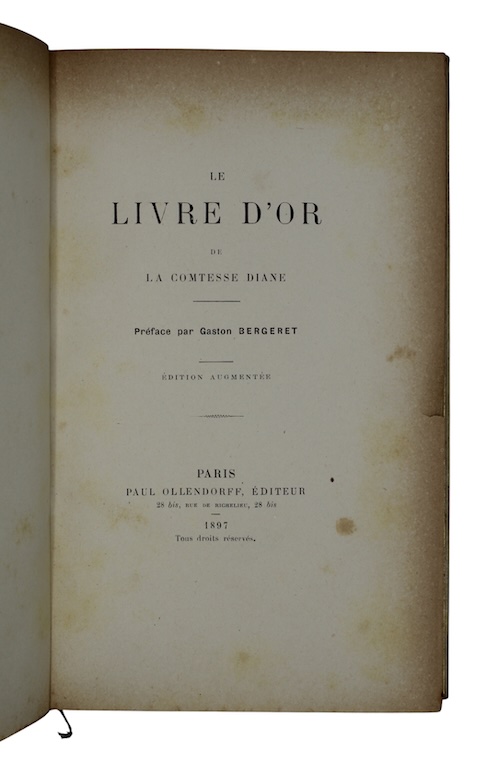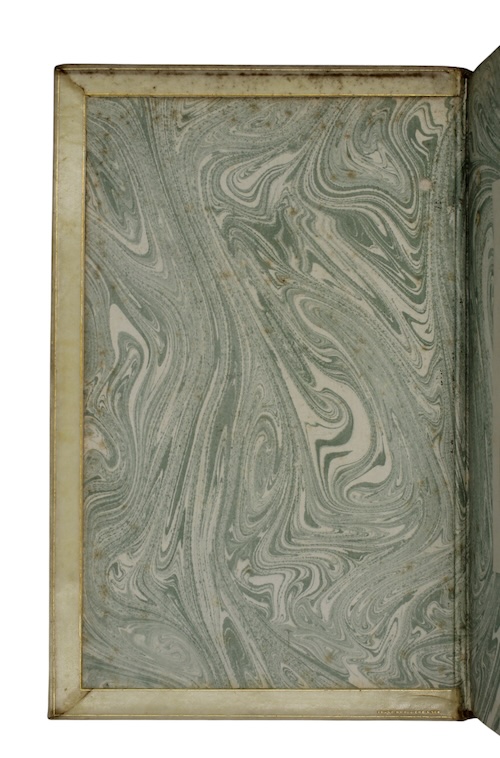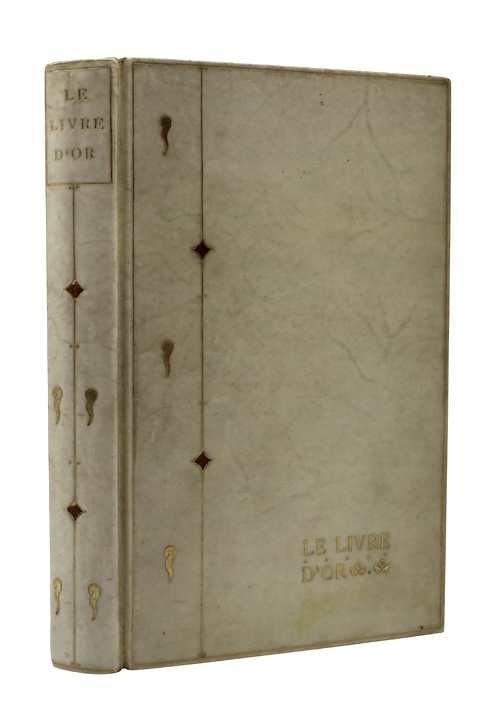BOUND BY RIVIERE
Le livre d'or de la comtesse diane.
Paris.
Paul Ollendorff, 1897.
With a half-title. Bound by Riviere (stamp-signed on front turn-in) in contemporary gilt-tooled vellum, small four-pointed star brown morocco inlays to spine and upper board, T.E.G., marbled endpapers.
An early edition, in a charming fin de siècle Riviere binding, of salonnière Marie Josephine de Suin, comtesse de Beausacq's (1829-1899) compilation of maxims and aphorisms gathered from contemporary intellectuals including archaeologist and explorer Jane Dieulafoy (1851-1916), painter Henri-Jean Guillaume Martin (1860- 1943), and satirical poet and anarchist Laurent Tailhade (1854-1919).
Robert Riviere (1808-1882) initially established himself at Bath as a bookseller in 1829, and subsequently turned to bookbinding. Around 1840 he moved to London, where he commenced business solely as a binder, attracting the patronage of a wealthy clientele, including royalty. The output of Riviere, like the majority of binders of this period, is lacking in innovation; contemporary tastes predominantly calling for the production of ‘retrospective’ bindings, frequently in a style not even remotely suitable for the books they contained. However, in all other aspects - from the quality of the materials employed, to the delicacy of the tooling - the bindings of Riviere are richly deserving of admiration; particularly considering that he was apparently entirely self-taught. On his death Riviere bequeathed his business to Percival Calkin, the eldest son of his second daughter, who had been taken into partnership by his grandfather in 1881, when the style of the firm was altered to Riviere & Son. The company continued to operate until 1939. The goodwill and the tools were sold to Messrs Bayntun of Bath.
£ 500.00
Antiquates Ref: 28950
Robert Riviere (1808-1882) initially established himself at Bath as a bookseller in 1829, and subsequently turned to bookbinding. Around 1840 he moved to London, where he commenced business solely as a binder, attracting the patronage of a wealthy clientele, including royalty. The output of Riviere, like the majority of binders of this period, is lacking in innovation; contemporary tastes predominantly calling for the production of ‘retrospective’ bindings, frequently in a style not even remotely suitable for the books they contained. However, in all other aspects - from the quality of the materials employed, to the delicacy of the tooling - the bindings of Riviere are richly deserving of admiration; particularly considering that he was apparently entirely self-taught. On his death Riviere bequeathed his business to Percival Calkin, the eldest son of his second daughter, who had been taken into partnership by his grandfather in 1881, when the style of the firm was altered to Riviere & Son. The company continued to operate until 1939. The goodwill and the tools were sold to Messrs Bayntun of Bath.



